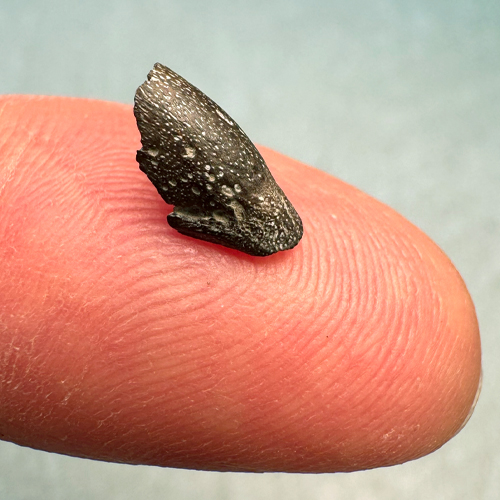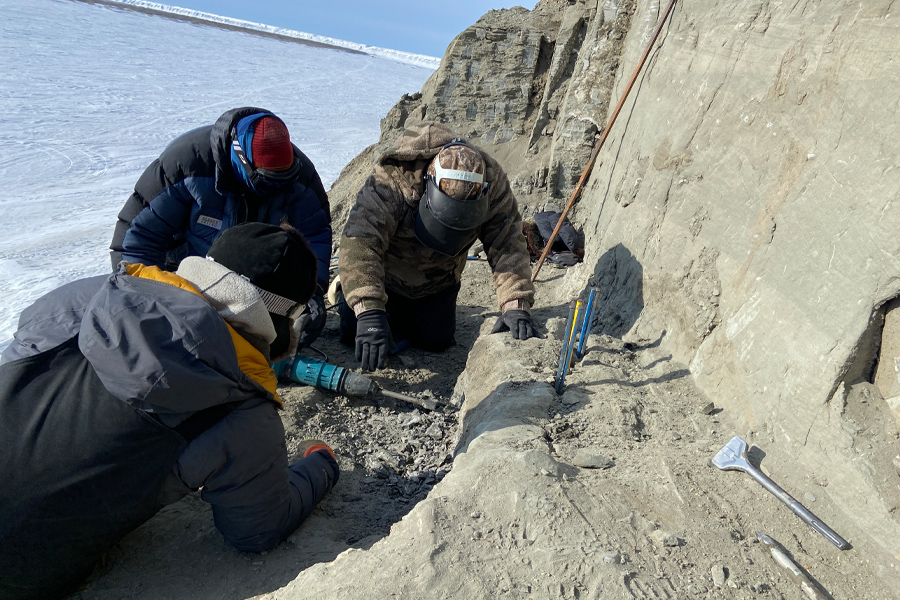Spring has sprung in the Arctic, and baby birds are making their way out into the world.
Rewind 73 million years ago - it was the same story.
That research is the cover of this week's edition of the journal of Science. A multi-university team found that modern birds were nesting in the Arctic in the Cretaceous period. That work scrambles previously known timelines about when birds began reproducing in the polar regions.

"Today, a plethora of birds migrate to the Arctic to take advantage of 24 hours of sunlight, to escape predators, to breed, and then when winter comes, they go south," said FSU Professor of Biological Science Gregory Erickson. "Prior to our research, the earliest known nesting of birds in that region was about 46 million years ago."
Erickson and Patrick Druckenmiller, director of the University of Alaska Museum of the North, have been excavating an area along the Colville River on Alaska's North Slope for over a decade. The area known as the Prince Creek Formation is rich with dinosaur fossils. But scientists have found far more than just dinosaur fossils in this area.
Some of the fossils they've discovered were those of baby birds.
"The Arctic is considered the nursery for modern birds," said Druckenmiller. "It's kind of cool when you go to Creamer's Field [a Fairbanks-area stopover for migrating geese, ducks and cranes], to know that they have been doing this for 73 million years."
Lauren Wilson, currently a doctoral student at Princeton University, began working on this project while she was a student at UAF under Druckenmiller. She focused specifically on these bird fossils, identifying multiple types of birds, including ones similar to modern ducks and geese.
"Finding bird bones from the Cretaceous is already a very rare thing," Wilson said. "To find baby bird bones is almost unheard of. That is why these fossils are significant."
After Wilson identified the bones as belonging to birds, the fossils traveled from Alaska to Tallahassee where Erickson confirmed via analysis of their microstructure that some were indeed perinates (late-term embryos or hatchlings).
Erickson noted that today, scientists consider birds to be a key part of the Arctic ecosystem. This research shows that they were a critical component 73 million years ago as well.
"Birds are really important in the Arctic today," Erickson said. "They're keystone species. They're integral to the ecosystem. How far back birds' role was in the modern Arctic today really wasn't known. We were stunned to date their involvement back to the Age of Dinosaurs."
Other collaborators on the paper include Daniel Ksepka from the Bruce Museum, John Wilson from Princeton University, Jacob Gardner from the University of Reading, Donald Brinkman and Caleb Brown from the Royal Tyrrell Museum of Palaeontology and the University of Alberta (Brown is also affiliated with the University of Manitoba), Jaelyn Eberle from the University of Colorado Boulder and Chris Organ from Montana State University.
Marmian Grimes from University of Alaska Fairbanks contributed to this piece.







